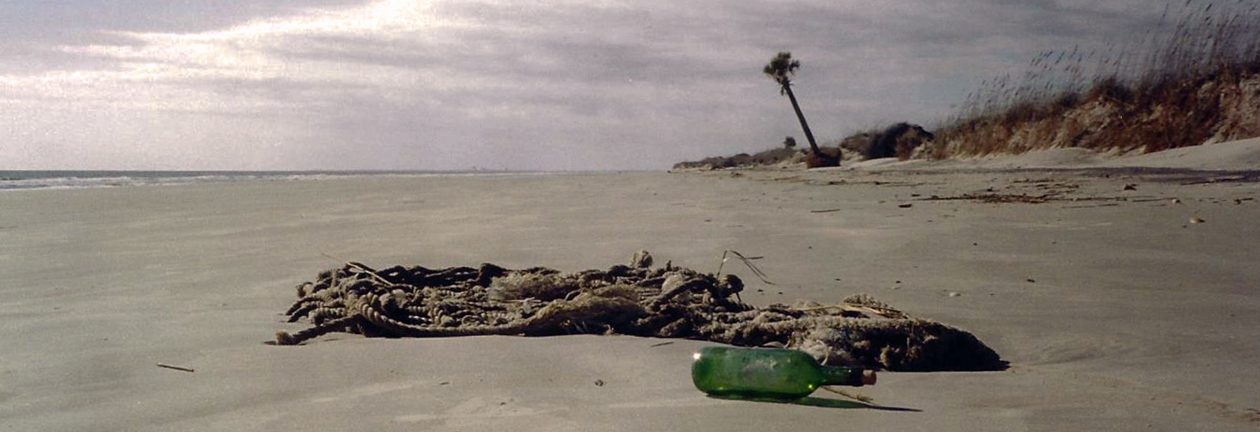Jerusalem, Israel
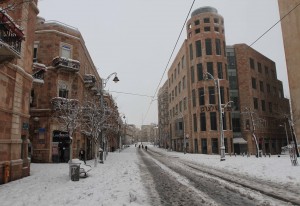

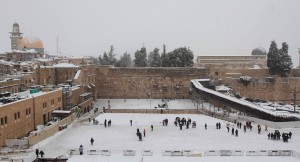
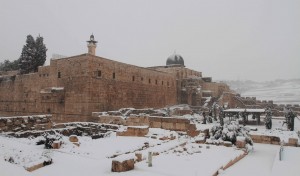
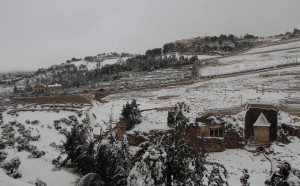
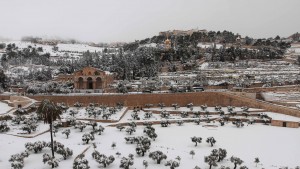
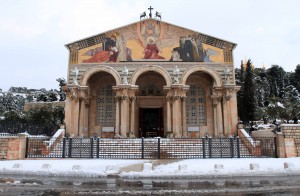
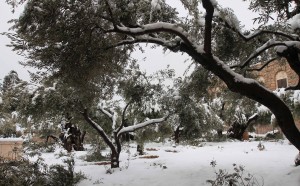
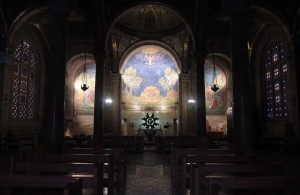
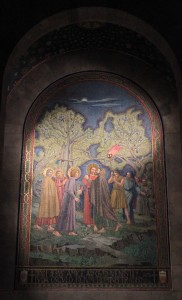
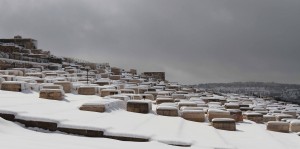

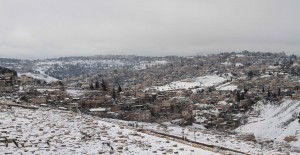

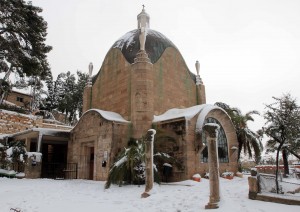
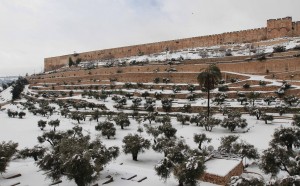
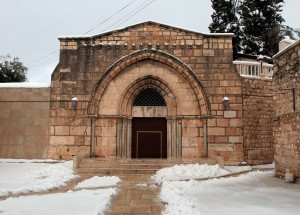
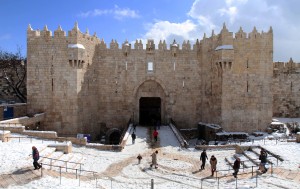
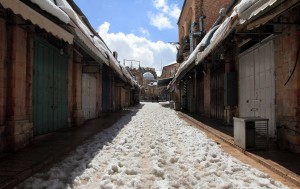
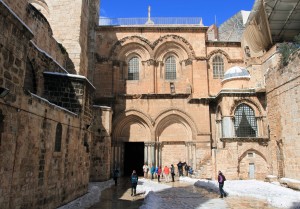
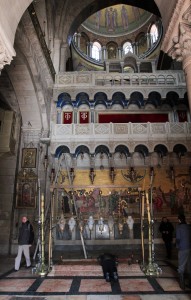
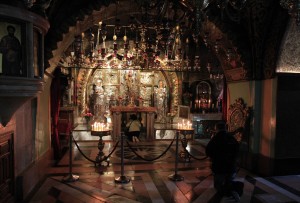
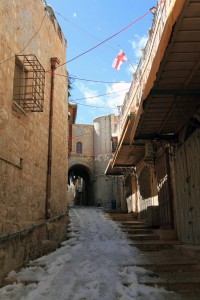
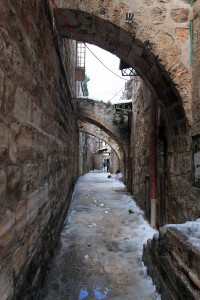
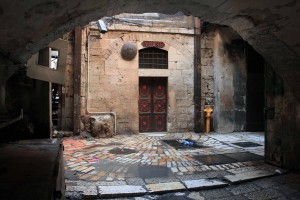
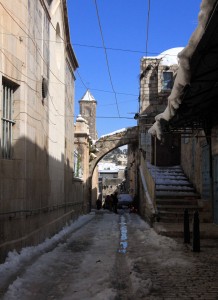
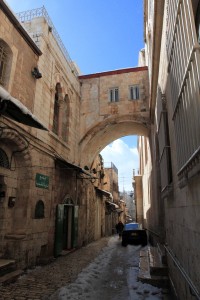
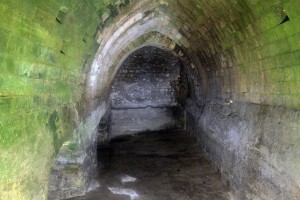
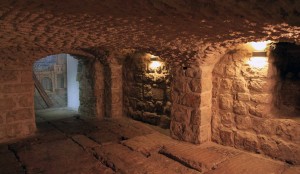
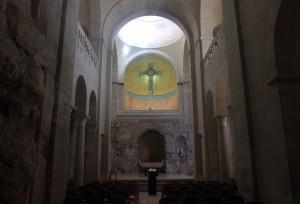
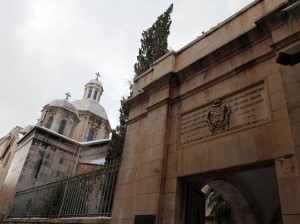
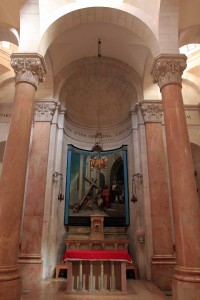
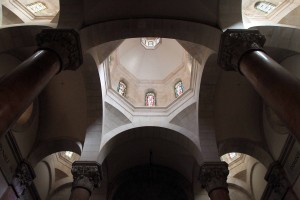
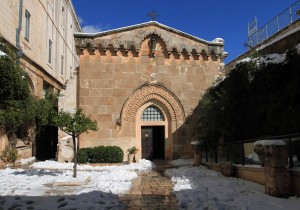
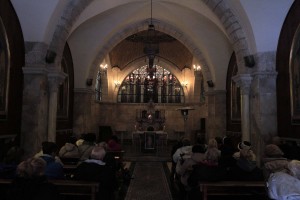
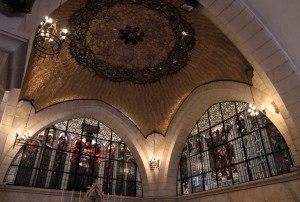
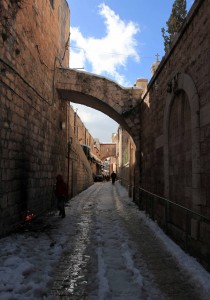
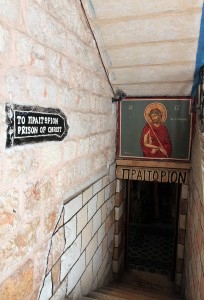
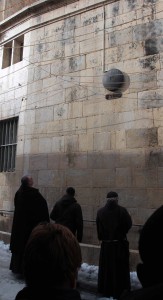
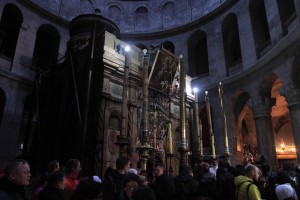
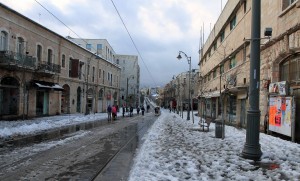
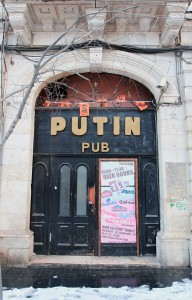
I woke up at 07:50 today, got dressed and ready, and then walked out in to a winter wonderland. Snow had fallen throughout the night and was continuing to fall on Jerusalem in the morning. I walked down Jaffa Road to the Old City, and enjoyed seeing palm trees covered in snow. I reached the wall around the Old City and entered in through Jaffa Gate. I then walked to the Western Wall to take some photographs of it in the snowfall. Then, I exited out Dung Gate and walked east to the Mount of Olives. I followed the road to the mount, passing by the Tomb of Absalom (a rock-cut tomb with a conical roof that is traditionally ascribed to Absalom, the rebellious son of King David, though recent scholarship has dated it to the first-century AD) in the Kidron Valley. I then reached the Garden of Gethsemane near the base of the Mount of Olives. I entered inside the Basilica of the Agony, a church that rests on the foundations of two previous churches; the church was built in 1924 AD and in front of the altar is an exposed piece of bedrock where Jesus Christ is believed to have prayed while in Gethsemane (which means “oil press;” also, Jesus prayed three times, similar to how olives are pressed three times to make olive oil). I walked around the dark interior of the basilica before exiting outside and talking with a man from Minnesota. I then walked up many steps to the north of the basilica to reach the top part of the Mount of Olives. I then walked southward past some kids playing with snowballs. Then I descended down a road, past a Jewish cemetery, and reached the Dominus Flevit Church – a quaint church that has a great view of the Old City. Then, I continued down the Mount of Olives, passed by the Church of Mary Magdalene (a Russian Orthodox Church located near Gethsemane), which was not open, and then continued down the road, passing by Gethsemane again. I ran in to the man from Minnesota again and we talked for a while before traveling our separate ways. At this point, the snow had stopped and the sun came out. Next, I walked to Mary’s Tomb, but this was also not open (no doubt due to the weather). Then, still outside the Old City’s walls, I walked north and then west, passing by the Rockefeller Museum and Herod’s Gate. Once I reached Damascus Gate, I turned north to the Garden Tomb (a possible location where Jesus Christ was buried – the other is in the Church of the Holy Sepulchre); unfortunately, the Garden Tomb was also closed because of the weather; so I turned around and entered the Old City via Damascus Gate. I walked around the Old City, looking at all the small streets with snow and slush on them (at this point, much of the snow was melting and the streets were covered in snow and water; my shoes and socks were already soaked, so I didn’t mind walking through the deeper pools of water). I then reached the Church of the Holy Sepulchre and paid my respects at the site of crucifixion; this time, I did as other did; I crossed myself, knelt down under the altar, rested my head on the disc marking the spot where the cross was, prayed, and then reached my right arm down in to a hole in the center of the disc to touch the rock of Calvary (I did not know this hole existed until I saw the people in front of me do likewise). I then exited out the church and walked the Via Dolorosa (the journey Christ took from being condemned to death to dying on the Cross) backwards. I reached Ecce Homo Convent, went inside, paid the entrance fee, and then explored the archaeological ruins below; I walked in to a giant cistern (the Struthion Pool) and then to an old Roman pavement (which served as a plaza and marketplace, and was built in 135 AD); the convent is built just north of Anatonia Fortress, which was built by Herod the Great around 30 BC to protect the city against attacks from the north. After visiting the ruins beneath the convent, I continued on the Via Dolorosa, to the First Station of the Cross. There are two churches by the First Station, the Church of Flagellation (as the name suggests, built on the site where Christ was flagellated) and the Church of Condemnation (where Christ was condemned to death); I walked around both small churches and especially liked the detailed stain glass windows inside the Church of Flagellation. Then, I walked to the Basilica of the Crowning of Thorns (located adjacent to the Ecce Homo Convent; it is also known as the “Ecce Homo Church”) and viewed a portion of the triple arch built by Hadrian (the largest arch is known as the “Ecce Homo Arch” and part of it can be seen on the Via Dolorosa spanning the street – buildings have overtaken most of the arch) which now serves as the back wall behind the altar inside the basilica. Next, I stopped at an ancient prison nearby the Ecce Homo Church that is believed to have held Jesus Christ before His trial. After visiting the prison (no photos were allowed inside), I walked to a nearby Armenian restaurant for lunch; like an idiot, I forgot it was Lent and I should be refraining from eating meat today; so, unfortunately, I had grilled meat (chicken and lamb) on skewers, bread and hummus, salad, and a hot tea with mint. After lunch, I returned to the Church of Condemnation and waited until 15:00 (it was only a fifteen minute wait) to walk the Via Dolorosa with priests and a whole lotta tourists (one was a Polish man from the hostel I’m staying at). We started at the first station and throughout each Station of the Cross, the priests would explain what happened at each station; most of the procession was conducted in Latin, but prayers were also said in English and each station was summarized in English as well. We walked all the way to the Church of the Holy Sepulchre, entered inside and conducted the last five stations in the church, at their respective sites. It was a nice experience, though I only wish I understood Latin. After the procession, I walked through the Old City and exited out the New Gate. I then walked to Jaffa Road and back to the hostel, stopping along the way for some much needed beer, wine, cheese, and chocolate. Once back at the hostel, I got to work typing away journal entries and drinking beer. I then had some Gouda cheese and chocolate before going to sleep (I’ll save the wine for later).
